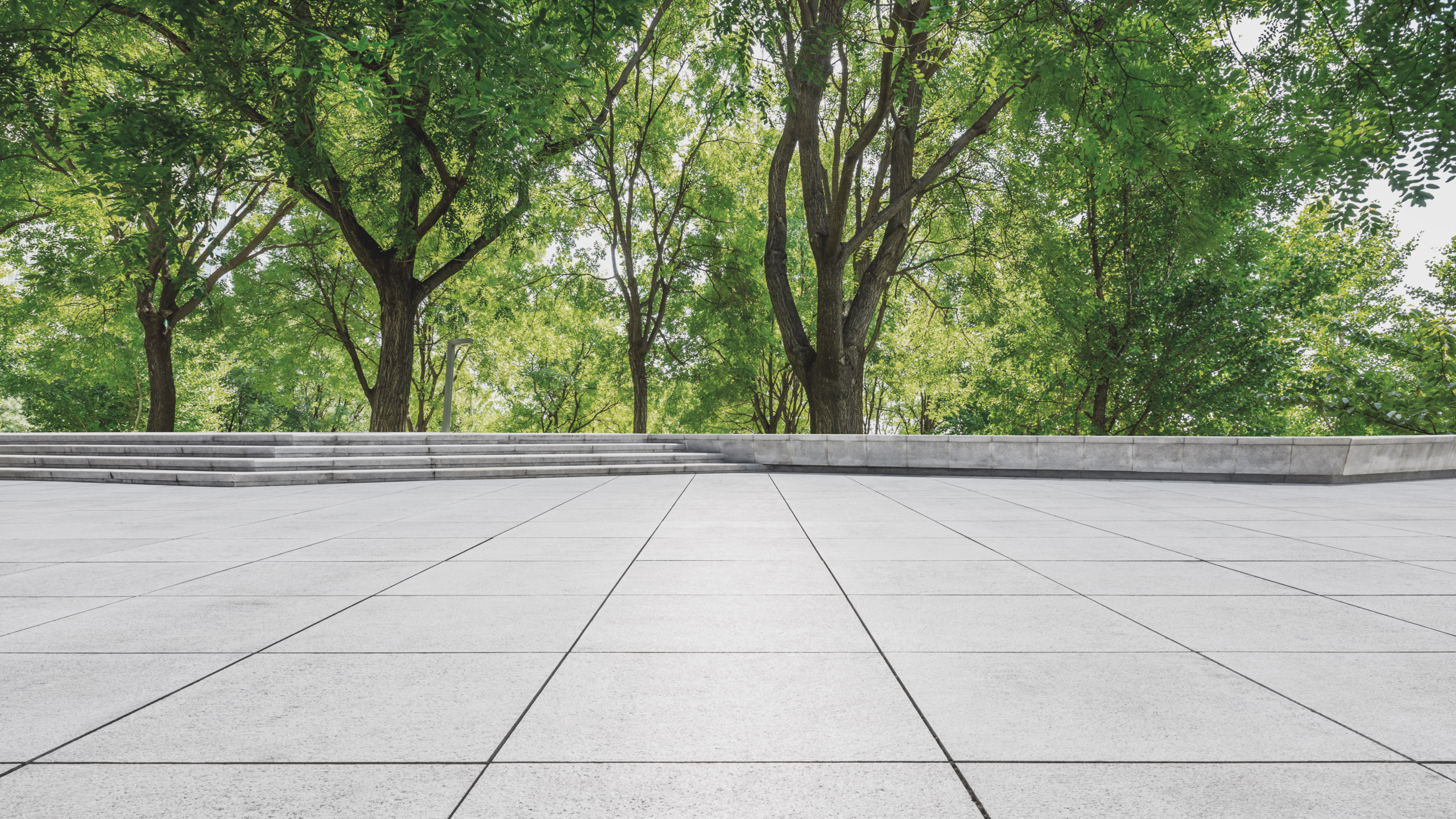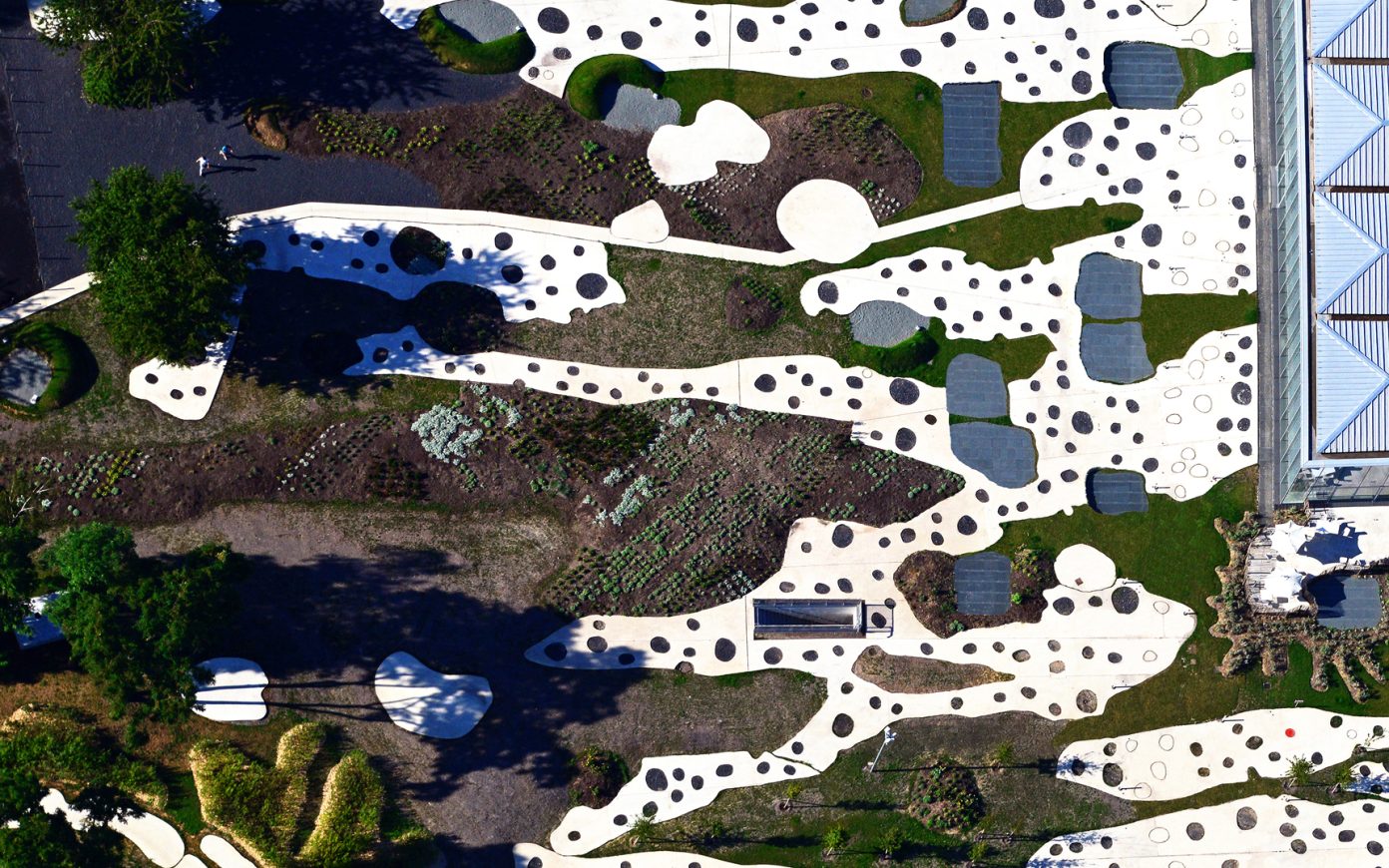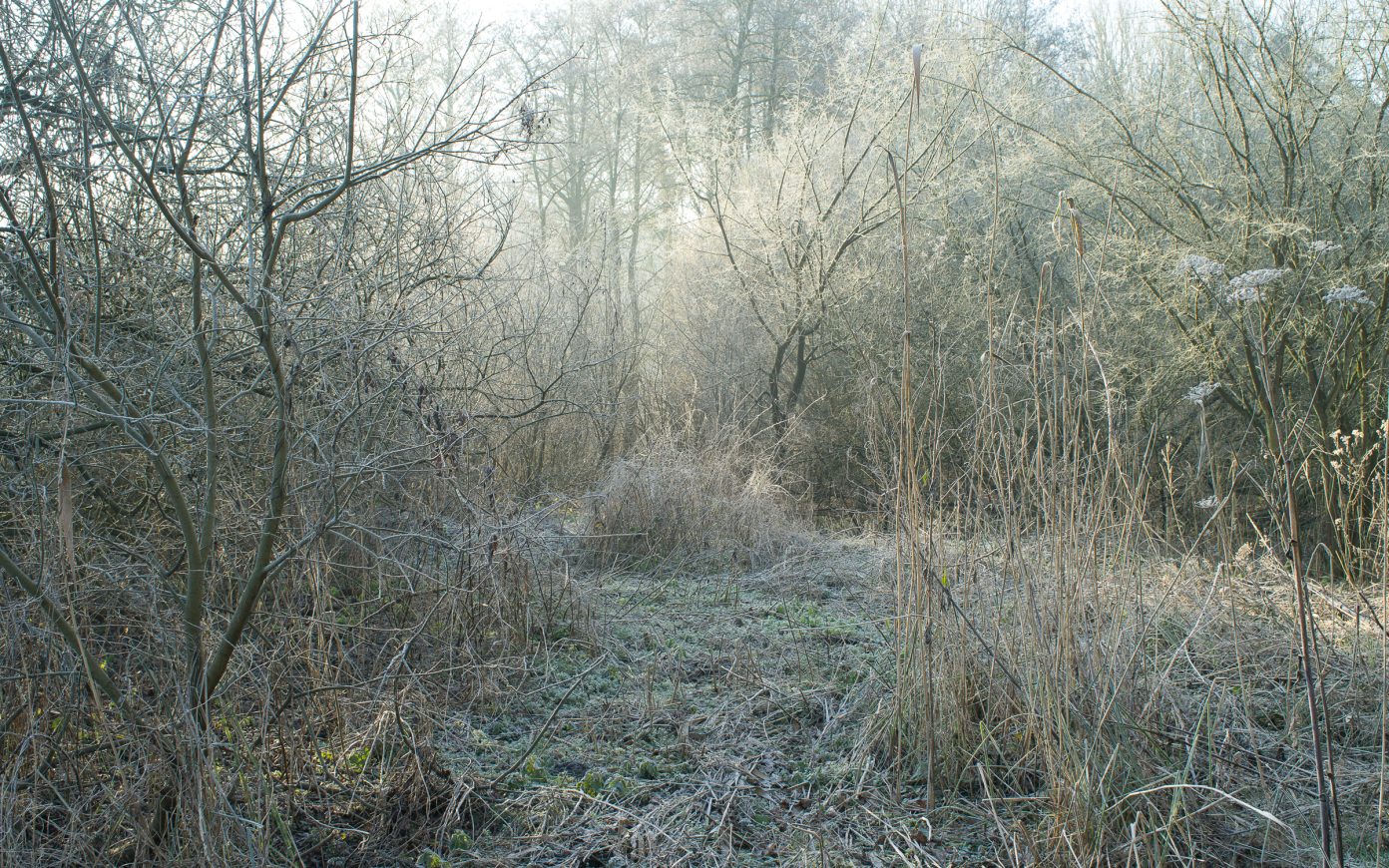Considering increasing environmental risk, the perspective of a +2 °C/3.6 °F temperature rise, and a 50% increase in mortality due to fine particulate matter in megalopolises by 2050,Jos Lelieveld et al., “The Contribution of Outdoor Air Pollution Sources to Premature Mortality on a Global Scale,” Nature, 525 (2015): 367–71, as quoted in the “Planting Healthy Air” study conducted by The Nature Conservancy and C40 Cities. cities will need to develop good habits in order to enjoy the benefits derived from nature. Procuring benefits from nature without considering its own fundamental needs would amount to an often-maligned utilitarian approach, however. Is there no reasonable course of action, somewhere between the two extremes of greenwashing and placing nature in inaccessible reserves, that could enable urban greenspace to flourish in harmony with an anthropized environment?
Caring for service-providing nature
Plants, and trees in particular, play a real role in preventing risks to public health and climatic hazards. First, by generating cooling, through the shade they provide as well as evapotranspiration,During the daytime, spaces with a canopy of mature trees benefited from a temperature lower by 2.7–3.3 °C compared with those devoid of trees in James R. Simpson and Edward G. McPherson, “Simulation of Tree Shade Impacts on Residential Energy Use for Space Conditioning in Sacramento,” Atmospheric Environment, 32, 1 (1998): 69–74. at a rate equivalent to five air conditioning units running twenty hours a day (in the case of an adult tree).Calculations drawn from a study by Johnston and Newton (2004) on mature trees transpiring 450 liters per day as mentioned in the Greater Lyon’s Charter for Trees. Then, by converting CO2 into O2 via photosynthesis (excluding the carbon stored in the soil) and by capturing airborne particulate matterBy investing $3.2 billion a year in planting the maximum possible number of trees in our cities, the mortality rate linked to fine particulate matter could be decreased by 2.7–8.7%. This would save 11,000–36,000 lives per year in the cities considered in the “Planting Healthy Air” study released at the American Public Health Association annual meeting on October 31, 2016. in their leaves and bark. Direct effects of the presence of nature in urban environments on asthma, hypertension, stress levels, patient recovery, aggressivity, and mood have been recorded.Workplace-related stress is lower among workers given access to a window overlooking a tree. Rachel Kaplan and Stephen Kaplan, “The Role of Nature in the Context of the Workplace,” Landscape and Urban Planning 26, no. 1–4 (1993): 193–201. Hospitalized patients given rooms with a garden view exhibited lower pain, fewer complications, and healed 10% faster. Roger S. Ulrich, “View Through a Window May Influence Recovery From Surgery,” Science 224, no. 4647 (1984): 420–1.
These benefits provided by nature are called “ecosystem services” and their economic value can be estimated in monetary terms. For example, the City of New York has estimated that each dollar invested in maintaining or increasing its tree heritage generated more than $5New York City, New York Municipal Forest Resource Analysis, Center for Urban Forest Research, USDA Forest Service, Pacific Southwest Research Station, 2007. by reducing costs incurred for healthcare, air conditioning, and stormwater management infrastructure.Depending on their characteristics, trees intercept up to 25% of rainfall with their leaves, thus limiting stormwater runoff. Furthermore, the combination of increased soil permeability and root development helps them achieve 25% rainwater retention the soil. Susan Downing Day and Sarah Beth Dickinson (Eds.), Managing Stormwater for Urban Sustainability Using Trees and Structural Soils (Blacksburg, VA: Virginia Polytechnic Institute and State University, 2008). This ability to lower flooding risks has led certain thinkers to refer to it as “green infrastructure,” though this is a divisive term among urban developers. Indeed, its drawback is that it objectifies/reifies nature by making it “utilitarian.” Nature thus remains viewed through a human-centric lens, given that the interest generated stems from the services it provides to humans and not what it represents in and of itself. Nevertheless, the terminology would have the advantage of developing closer ties between city departments in charge of public roads and green spaces, which would not only open up dialogue between these key protagonists and improve the understanding of the global challenges related to urban management, but also allow urban nature to tap into municipal infrastructure funds.
In any case, trees can only provide ecosystem services if they are in good health and these services are commensurate with their age and size. This implies going beyond planting a lot and planting well, at the right place, and, in order to do so, increasing our understanding of the subject.
Small deeds for great trees
Well aware of the benefits provided by urban revegetation, cities are taking concrete action. Paris is planning to plant 170,000 new trees by 2026 and to ensure a strong expansion in the creation of fast-growing “urban forests.” The Lyon metropolis aims to plant at least 300,000 trees, which would raise the surface of the urban canopy to 30% by 2030. Grenoble is aiming for 100,000 trees, and Montpellier for 50,000, while Milan is promising 3 million new trees by the same date. This is a pointless numbers race if the basic conditions of tree growth aren’t satisfied, however.
A plantation (whether urban or not) is by no means a forest, which results from spontaneous growth and highly diverse phytosociological communities. Trees happen to have root systems that are once to twice as big as their foliage. This implies that for trees to develop under optimal conditions, their roots mustn’t be covered with any impervious surface, nor enclosed in pits or planter boxes. Taking care of the tree heritage also implies not disrupting circadian cycles with night-time lighting, not conducting unnecessary pruning, and diversifying tree species in order to reduce pathogen-induced mortality. Such actions are only seldom implemented, as reflected in the low life expectancy of urban trees. Their short lifespan is probably due to a modern unfamiliarity with urban agroforestry, given that the trees that were planted in the days of Alphand—the two remarkable plane trees of Grand Palais being one such example—demonstrate that, when properly planted, trees can live upwards of 100 years in urban environments.
Unfortunately, many urban projects continue emphasizing design over plant biology, causing the underdevelopment of urban trees and lifespans as low as 20 years. Potted trees are still used to decorate city squares for instance, and, at the Angers railway station, the height of soilless culture is achieved, as the planters hang from the ceiling, while, in Copenhagen,Marshall Blecher and Studio Fokstrot, Copenhagen Islands. a widely acclaimed project proposes having them float on platforms. Specialists including Frédéric Ségur,Frédéric Ségur is the head of the Landscape and Urban Forestry Department at Lyon Metropolis. There, he is in charge of Plan Canopée, which puts trees at the service of the adaptation of the city to climate change. Forthcoming interview in Stream 05. Véronique Mure,Véronique Mure is a botanist and professor at the École Nationale Supérieur du Paysage de Marseille landscaping school. She collaborated with PCA-STREAM in the “Re-enchanting the Champs-Élysées“ study. Caroline Mollie-Stefulesco,Landscape planner and author of Des arbres dans la ville. L’urbanisme végétal [Trees in the City. Plant-based Urban Planning] (Paris: Actes Sud, 1993, 2009, 2020). and Francis HalléFrancis Hallé is a botanist specializing in the study of trees and tropical rainforests. He is the author of Du bon usage des arbres, Un plaidoyer à l’attention des élus et des énarques [The Proper Use of Trees. An Appeal to Politicians and our Administrative Elite] (Paris: Actes Sud, 2011). Forthcoming interview in Stream 05. nevertheless enable us to take a step back from such operations.
The time of trees is much longer than the time of humans, and planting a tree means looking several decades ahead. This is why project developers must agree to plant young trees, though the impression may seem disappointing at the project inauguration. Trees that are planted young adapt better to the constraints of their environment and therefore become more robust and resistant. It is also becoming crucial to adapt the selection of tree species to the estimated temperature increases in order to avoid condemning young trees to premature death as soon as they are planted. The availability of water and nutrients, and, as a result, soil type and depth are of key importance to the lifespan of urban tree heritage. This imperative sounds like a paradox given their largely impervious urban environment and the fact that they are seldom provided with open ground and their soil cluttered with underground networks.





